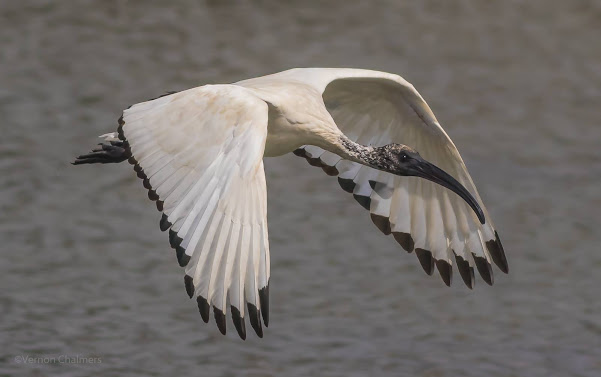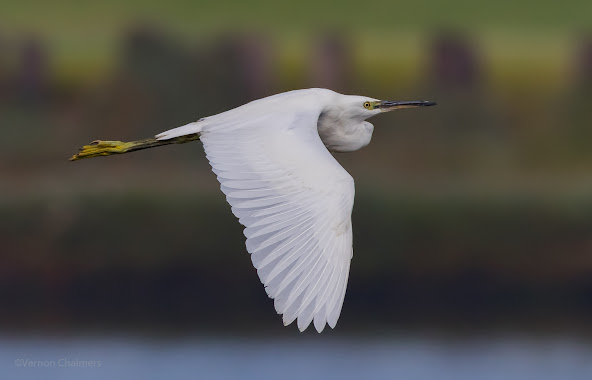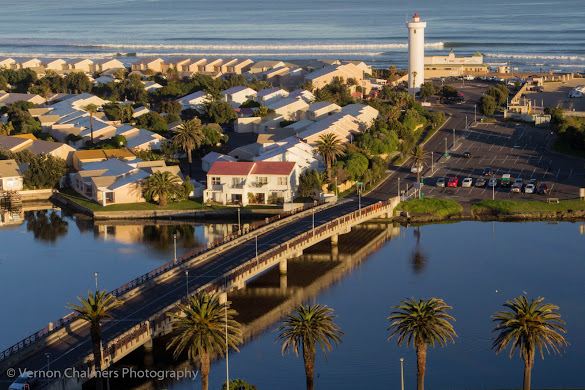Light Conditions for Predominantly White Birds in Flight at Woodbridge Island
 |
| Little egret in good morning light at Woodbridge Island |
I may at times (in deteriorating light) lower the shutter speed to bring the ISO down (for birds in flight), other than that, I ‘focus’ on about everything else, but the camera. Over the years I’ve learned to trust my equipment to deliver within its exposure / performance parameters (after making the decision to go out birding – irrespective of conditions).
Being in a position to evaluate the most suitable conditions from 'higher-up' (as a definite advantage) before I go out with an estimated Auto-ISO 320 - 800 range for birds in flight. With darker backgrounds this may go up to as high as ISO 1200 - 2000 (or a bit higher). With darker backgrounds this may go up to as high as ISO 1200 - 2000+.
The last image here represents my ideal light / weather conditions shooting opportunity (this is what I see before making a decision for a serious personal early morning shoot down the river).
Very early morning summer light, poor light or foggy weather are my preferred conditions for the egrets and the occasional ibis.
Image 3 and 4 are captured in poor light / weather conditions where I was either in training with someone or the fog rolled in.
Image 1: Little egret in good morning light (based on the conditions as assessed in image 4)
Image 2: African sacred ibis in poor light (with no choice in conditions)
Image 3: Little egret appeared as the fog was rolling in
Image 4: The most conducive early-morning conditions before making a decision for a serious personal shoot
* All images over the Diep River / Woodbridge Island
High-quality crisp morning light will always be a priority over technology for me – and therefore I don’t have the need to own the latest equipment.
I respect the fact that many bird photographers may not always be in a position to select the light / conditions of their choice – and therefore may be required to invest in camera gear that can handle much higher ISO's in poor / low light.
On many occasions I do go out (with clients or on my own) to shoot in adverse conditions to learn (and to make settings adjustment(s) if required - depending on the equipment in hand).
I have also learned there is no such thing as a perfect image... get as close as you can to an ‘ideal exposure’ in terms of subject / conditions and just enjoy the moment(s).
Canon Equipment
AF / Manual Exposure Mode Settings
© Vernon Chalmers Photography
- Canon EOS 7D Mark II DSLR Camera Body
- Canon EF 400mm f/5.6L USM Lens
AF / Manual Exposure Mode Settings
- Shutter speed: 1/2500 - 1/3200s
- Aperture: f/5.6 - f/6.3
- Focal length 400mm
- Auto-White Balance (AWB)
- Auto ISO (320 - 1000)
- AF Mode: Zone / Wide Zone
- AF Case: Case 1 (Default)
- AI Servo / 10fps multi-shot
- RAW processing (shooting to RAW only)
- Handheld
© Vernon Chalmers Photography
 |
| African sacred ibis in poor light conditions |
 |
| Little egret as the fog rolled in |
 |
Above Woodbridge Island : Good conditions for Birds in Flight Photography |
Canon EOS / Canon EOS R / Powershot Photography Training Milnerton Woodbridge Island | Kirstenbosch Cape Town | Across the Cape Peninsula
All Images Copyright / Intellectual Property of Vernon Chalmers More Information >